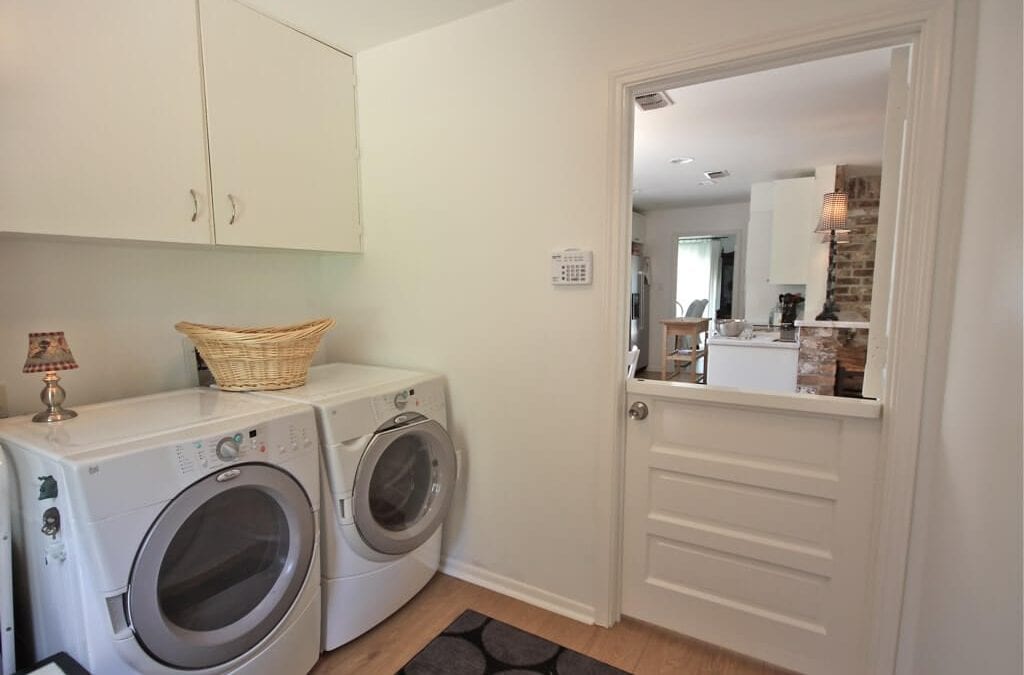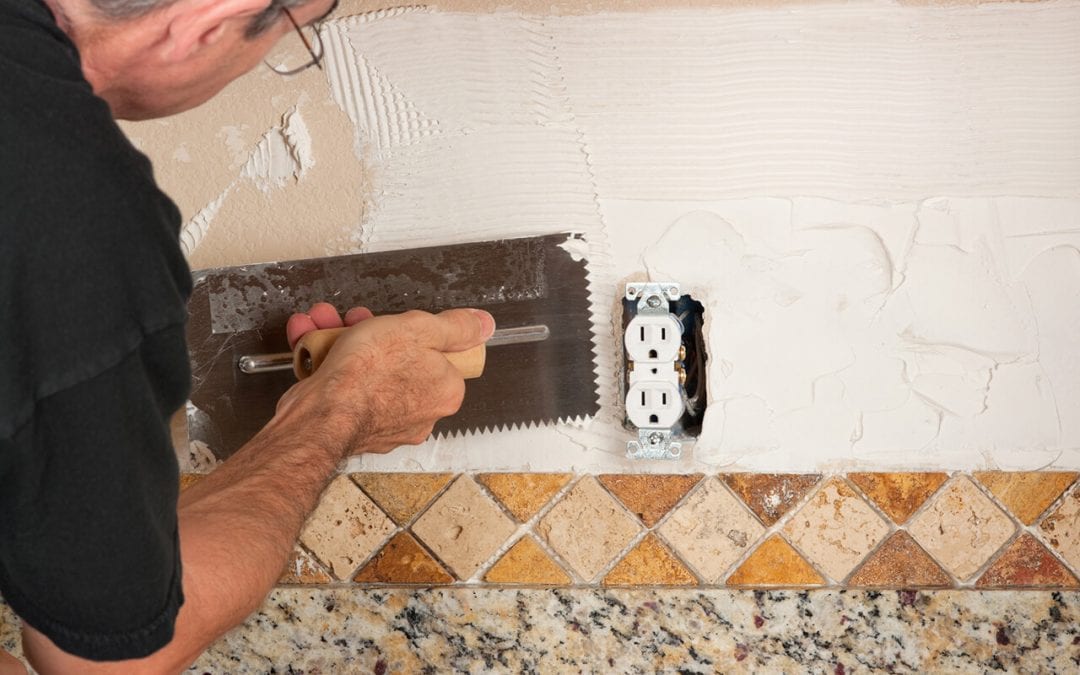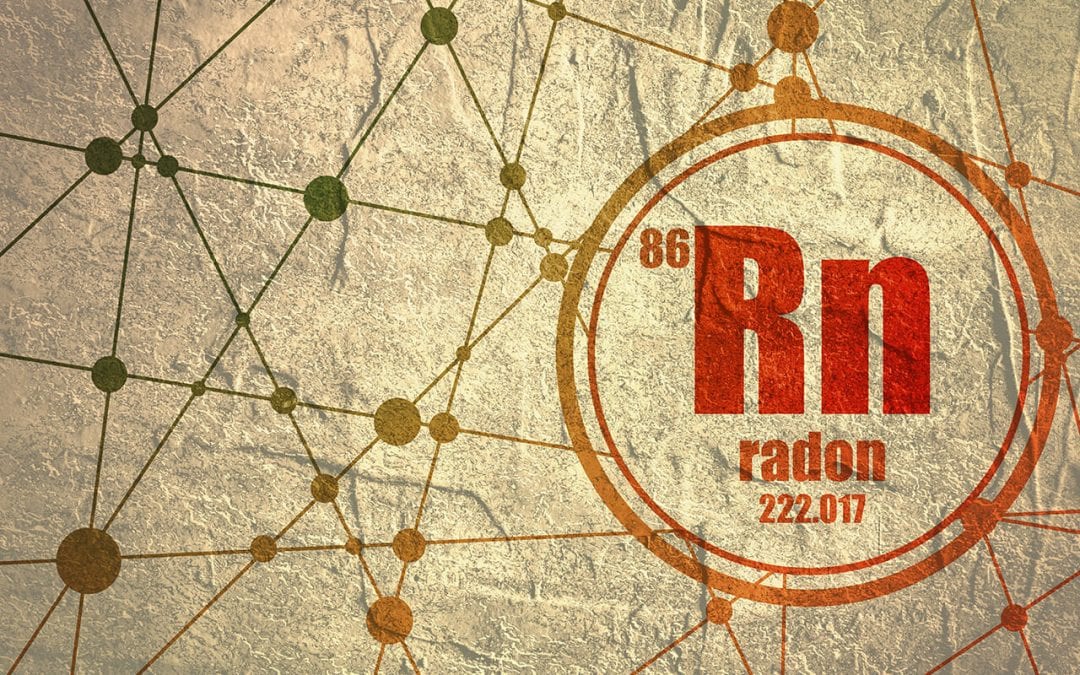
by mwonfor | May 20, 2019 | Community, Home Maintenance, Homeowners
You don’t usually think about how long you’ve had an appliance in your home until it stops working. Learn about the typical major home appliance lifespans so you’ll know when to budget for replacing the ones you have.
Gas Ranges Have Longer Home Appliance Lifespans Than Electric
At about 15 years, gas ranges have the longest life expectancy of any major appliance. Their electric range counterparts aren’t far behind with a 13-year average lifespan. The hood that’s used to trap grease above a range usually functions for about 14 years. Extend the life of your range by:
• never dragging pots from one element to another on electric ranges
• cleaning food particles from between burner head slots on gas ranges
• using the oven’s self-cleaning feature as per the manufacturer’s directions
Fridges Won’t Last as Long, but They’re More Efficient Than Ever!
The U.S. Department of Energy reports that new refrigerators with an Energy Star label use about 15 percent less energy than other models. They use about 40 percent less power than models available just after the new millennium started.
Major home appliance lifespans for refrigerators are about 13 years for standard models and almost a decade for compact models. Chest freezers average about 11 years, although new models could last as long as 20 years. Boost the lifespan of refrigerators and freezers by:
• cleaning the compressor coils every 1-2 months
• using a soft-bristle attachment to vacuum easily accessible parts
• wiping exterior and interior surfaces down with mild detergent and water
Dishwashers Have Shorter Home Appliance Lifespans
These popular kitchen appliances get a lot of use, so you should start looking for a new dishwasher after about 9 years. On the bright side, newer models use much less water than older, less efficient models. Get the maximum life out of your dishwasher by loading it properly, cleaning the filter, and wiping down the door gasket.
Washers and Dryers Will Last About a Decade
Clothes dryers tend to last a bit longer than washing machines – 13 and 10 years, respectively. Major home appliance lifespans for washers and dryers can be stretched a bit if you maintain them by:
• only using your washer/dryer when you have a full load
• cleaning traps and filters on a regular basis
• replacing hoses on your washer as needed
• empty any pockets before washing your clothes
Newer Furnaces and Water Heaters are Smart Long-Term Investments
Typically, modern furnaces will last around 15-20 years, depending on the model and the type of fuel it uses. Gas furnaces generally last a longer than electric models. Gas-fired boilers, however, keep you warm for roughly 20 years. Heat pumps provide year-round heating and cooling for 16 years, on average. Air conditioners average about 10-15 years.
With water heaters, expect traditional gas and electric tanks to work well for 10-11 years. Major home appliance lifespans for water heaters can be 20 years or more if tankless. Increase the home appliance lifespans of your furnace and water heater by having them professionally serviced at least once a year.
Replace Your Microwave and Trash Compactor More Often Than Other Appliances
Microwaves, which have been making meal prep a breeze for more than 50 years, last anywhere from 5 to 10 years, with the average life expectancy being 9 years. Trash compactors are at the lowest end of the appliance life expectancy scale at about 6 years. However, your garbage disposal could last for about a dozen years if you maintain it properly.
These are averages for major home appliance lifespans. The actual life of your appliances depends on how well they are maintained, the manufacturer, and how often they are used. Be proactive about taking steps to make your appliances last longer so you can enjoy them for their full expected life.
American Home Inspection Services provides home inspection services to Southeast Michigan. Contact us to schedule an appointment.

by mwonfor | Apr 19, 2019 | Community, Home Maintenance, Homeowners
How to Choose a Type of Home Water Filter
The quality of the water that comes out of your tap varies based on where you live and your plumbing. It is always a good idea to filter the water you drink and there are many different options for water filtration systems. Read this article to learn more about the available systems and decide which type of home water filter is right for you.
Activated Charcoal: A Popular Type of Home Water Filter
Activated charcoal filters come in the form of water filtration pitchers, faucet attachments, and built-in refrigerator filters. The charcoal attracts and absorbs toxins like chlorine, volatile organic compounds that come from pesticides and detergents, and sediment.
They don’t remove heavy metals and dissolved inorganic substances. If your water tests positive for substances like lead or mercury, an activated charcoal filter will not be sufficient.
Reverse Osmosis
Reverse osmosis removes 99% of all contaminants in water, including heavy metals and salts. Most reverse osmosis systems have a built-in carbon filter to remove chlorine. While this is a great type of home water filter for areas with lead and other heavy metals, the process wastes about 4 gallons of water for every 1 gallon purified.
Water Distillation
A water distillation system brings water to a boiling point so that it evaporates, leaving behind pollutants that have a higher boiling point. This process separates water from contaminants and then condenses the pure water vapor into liquid in a separate container.
This type of home water filter removes most impurities except for certain pesticides and volatile organic compounds that have a lower boiling point than water. Like reverse osmosis systems, some water distillers have a carbon filter attached to remove the remaining pollutants.
UV Light Filter
If your home drinking water tests positive for bacteria or viruses or if that is a concern in your area, a UV light filter may be your best choice. UV light treats bacteria and viruses in water by making microorganisms unable to replicate. It does not remove other kinds of pollutants, so if you want to remove chlorine, VOCs, heavy metals, and other impurities, use it in conjunction with another type of home water filter.
American Home Inspection Services provides water testing and other home inspection services to Southeast Michigan. Contact us to schedule our services.

by mwonfor | Mar 20, 2019 | Community, Home Maintenance, Homeowners
Cleaning and organizing your garage may feel like an overwhelming task, however, creating a mess-free, ordered space will help you make better use of your garage. Organize your garage easily with these four steps.
The Benefits of an Organized Space
Right now, you may not have a clear idea of exactly what is in your garage. If you’ve been unable to find an item that you thought was stored in the garage, you may have unnecessarily purchased a duplicate of the item. Also, when your garage is cluttered, you cannot use this space for vehicle storage or as a work area. It may take some time to organize your garage, but the project doesn’t have to be complicated. Follow these steps to better organize your space.
1. Set Aside a Full Weekend
Cleaning and organizing a garage is not something that you can tackle in a few extra minutes. To make real progress, allow at least one or two full days to get the job done. This project involves getting rid of unwanted items and organizing the items that you choose to keep. Because you may need to use some of your driveway space for at least a few hours, it’s good to organize your garage on a nice sunny day.
2. Remove Unwanted Items
To organize your garage, start by removing items that you no longer need or want. Use the rule to touch each item only once. As you encounter an item, decide if you will sell it, donate it, throw it out, or keep it. Create piles for each of these categories. For the items that you intend to keep, create sub-piles of things you can store together. There may be sub-piles for holiday décor, sports equipment, and gardening tools.
3. Haul Away the Junk
Before you can begin organizing the items you want to keep, the unwanted items must be removed. Take items to a nearby donation center or schedule a pickup. List some items for sale online or plan to host a garage sale soon. Hire a junk removal service to pick up your trash if your pile is too large for curbside pickup.
4. Set Up a System to Organize Your Garage
After you have freed up some space in your garage, assess the contents of the piles you’re keeping to determine the best organizational features to invest in. For example, open shelves, bins, drawers, and pegboards are a few storage options that will help to organize your garage. Each item should have a dedicated place of its own so that you can find it later when needed.
Organizing your garage allows you to better use this area of your home. Items will be easier to find and you’ll free up more usable space for storage.
American Home Inspection Services provides home inspections and related services to Southeast Michigan. Contact us to request an appointment.

by mwonfor | Feb 21, 2019 | Community, Home Inspection, Home Maintenance, Homeowners
House fires are feared by all homeowners. Fortunately, most house fires are preventable. Following these tips for home fire safety will reduce the chances of a tragedy happening to you.
1. Follow Tips for Home Fire Safety and Smoke Detectors
A house fire is not always immediately noticed. If a fire occurs, everyone in the home is vulnerable to smoke inhalation and injuries. Installing smoke detectors on every floor of your home in hallways, bedrooms, and the kitchen alerts to you smoke indoors.
Maintain the smoke detectors by checking their functionality every few months. Keep spare smoke detector batteries in your house and replace the batteries when necessary.
2. Never Leave Food Cooking Unattended
Remain in the kitchen while cooking on the stove. Leaving unattended food heating on the stove is a fire hazard. Remember to turn off the oven and any stovetop burners after cooking, especially before leaving the house. Always set a timer when using the oven to prevent burning food and cooking fires, and never leave food cooking in the oven when you leave the home.
3. Clean The Lint From Your Dryer
Teach your family members basic instructions for washing and drying clothes, including cleaning the lint filter in the dryer every time you use it. Dryers become full of lint through years of use. Cleaning out your lint trap is easy and should be done before each load of laundry.
A larger fire hazard is the lint that accumulates within the dryer vent itself. Have this cleaned at least once a year or more depending on how much laundry you do. Lint is flammable and can cause a house fire if it’s not properly removed.
4. Protect Space Heaters
Space heaters come in handy during cold weather by providing extra warmth in your living spaces. To safely use a space heater, don’t place it near curtains or furniture. Keep the heater away from areas with piles of clothes or blankets. Children should be taught to play away from the heater. Place the space heater on a heat-resistant surface that’s both stable and level. Always turn it off before you leave the house.
American Home Inspection Services provides home inspections and related services to Southeast Michigan. Contact us to schedule an inspection.

by mwonfor | Jan 18, 2019 | Community, Home Maintenance, Homeowners, Seasonal
Why Home Improvement Ideas for Winter Make Sense
Improving your home regularly is a great way to increase property value. Improvement projects can increase energy efficiency, improve aesthetics, and make it easier to sell later. When you slack off during the winter months and put home improvements on hold, you are missing out on days that otherwise could be used productively. These are some of the best home improvement ideas for winter to consider competing in the next few months.
1. Re-Painting Interior Walls and Trim
Painting walls and trim is often viewed as a cosmetic or decorative activity that does little to improve value. However, periodically painting the walls and trim can protect against and repair some types of damage. This can improve desirability when you attempt to sell your home. When selecting paint colors for interior walls and trim, choose neutral hues that have a broad appeal unless you intend to paint again before you list your home for sale.
2. Adding Insulation to the Attic
As you consider home improvement ideas for winter, energy efficiency should be a focal point. Insulation in your attic plays a vital role because it traps climate-controlled air indoors where you want it instead of letting the warm air rise up through the roof. Your home may need more insulation if it was constructed with low-quality materials initially or if the existing insulation has deteriorated. Consulting with an expert is a smart way to determine if new insulation would be beneficial to your home.
3. Upgrading Flooring
Installing new flooring is a project that can have a big impact on your home. It can improve property value and appeal and reduce cleaning and maintenance tasks. This project can be completed at any time of year, but since it keeps you inside, it’s one of our favorite home improvement ideas for winter. Rip up the carpet and refinish the hardwood underneath, or install an affordable linoleum or vinyl flooring option.
4. Replacing or Adding Backsplash
If your kitchen or bathrooms are looking outdated, replacing the backsplash is an easy way to modernize the style. If you don’t have backsplash already, adding it will upgrade the aesthetic of your home. A do-it-yourself home improvement enthusiast may be able to complete a tile installation project in an afternoon.
Look at your home’s current needs and your budget before deciding which of these home improvement ideas for winter may work well for your home.
American Home Inspection Services provides home inspections and related services to Southeast Michigan. Contact us to request an appointment.

by mwonfor | Dec 21, 2018 | Community, Home Inspection, Home Maintenance, Homeowners
January is National Radon Action Month, so take some time to familiarize yourself with the risks of radon in the home and how to best protect your family.
What is Radon?
Radon is a radioactive gas that naturally forms underneath the ground. Radon is found throughout the United States and any home is at risk of having unsafe levels inside. After radon forms in rocks and soil, it floats upwards into the atmosphere, or in some cases, into buildings. When it gets inside a building and is not ventilated out, the levels of radon build and the risks of radon become a problem.
Why is Radon Dangerous?
Radon is dangerous to breathe because it has been known to cause lung cancer. In fact, an estimated 21,000 deaths a year are the result of radon-induced lung cancer. Radon is especially unhealthy for children to breathe because their lungs are smaller. Some studies have also shown a positive correlation between indoor radon exposure and childhood leukemia. When combined with cigarette smoking, the risks of radon in the home are even more pronounced.
How Do You Detect Radon?
Because radon is invisible and has no smell, it is impossible to know how much radon is in an indoor space without a radon test. While there is the option to buy a cheap DIY testing kit and administer the test yourself, poor quality materials and user error can make these tests inaccurate. Instead, hire a trained professional with superior testing equipment to perform the test.
Protect Your Family From the Risks of Radon
The risks of radon in your home are too serious to ignore. January is National Radon Action Month and a great time to test the levels of radon in your home so that you know that your air is safe to breathe. If your home tests at 4 picocuries/liter or higher, you should hire a radon mitigation company to lower the levels.
Click here to learn about other ways to reduce radon levels in the home.
American Home Inspection Services provides Southeast Michigan with professional radon testing and home inspection services. Contact us to book our services.






